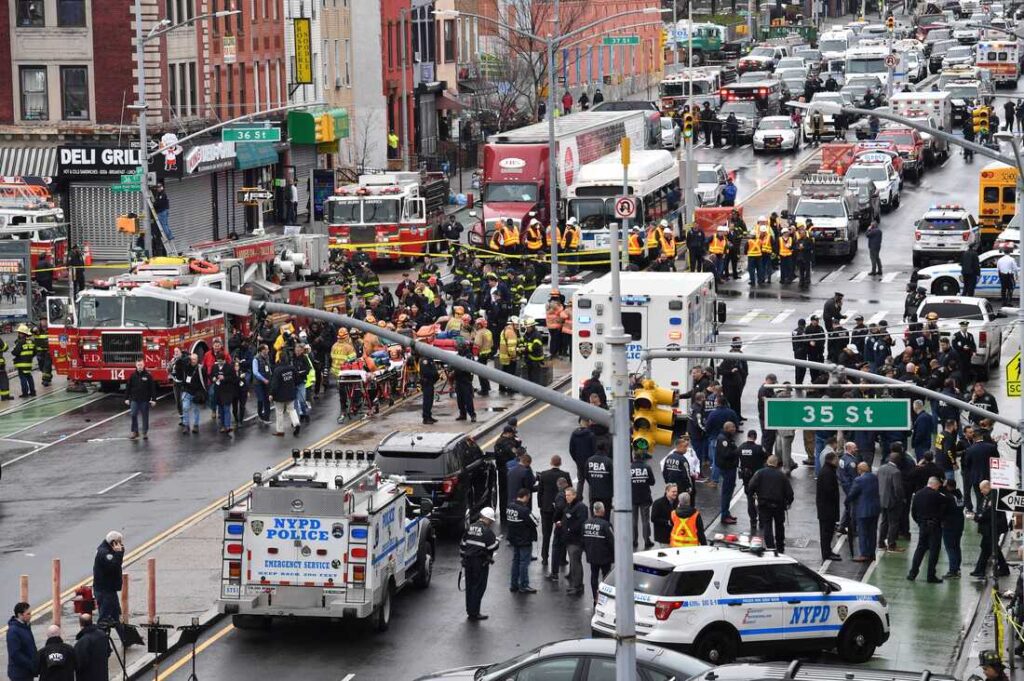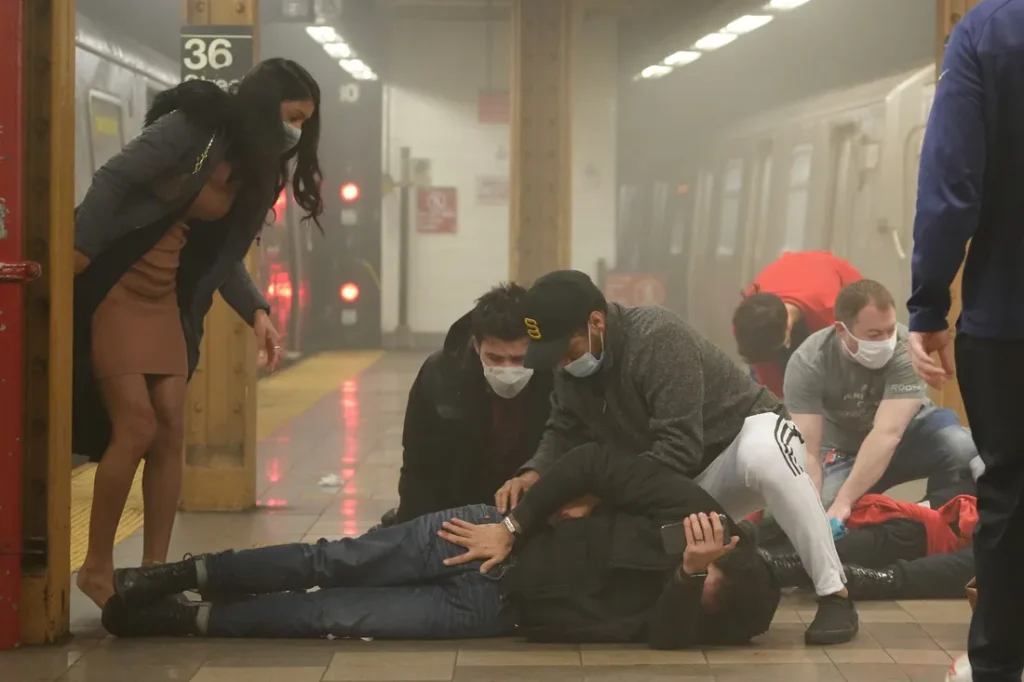Introduction to subway shooting
Subway shootings have become a growing concern in urban areas worldwide, particularly in major metropolitan cities where public transportation is a necessity. These incidents not only disrupt daily life but also instill fear among commuters. While mass shootings in public spaces have been a persistent issue, subways present a unique set of vulnerabilities due to their confined spaces, high population density, and limited security checkpoints.
This article takes an in-depth look at subway shootings—examining their causes, impact, and potential solutions. By understanding the underlying issues, we can work toward creating safer public transportation systems.
The Rise of Subway Shootings: Why Are They Happening More Often?
Increased Access to Firearms
One of the primary reasons behind the rise in subway shootings is the accessibility of firearms. With lenient gun laws in several regions, it has become easier for individuals—both criminals and those with mental health struggles—to obtain weapons. In cities with a high crime rate, illegal firearms often find their way into the hands of dangerous individuals, making public spaces like subways vulnerable to violent incidents.

Mental Health Crisis and Public Safety
Another contributing factor is the ongoing mental health crisis. Many subway shootings involve individuals struggling with severe mental illnesses who either lack access to proper medical care or refuse treatment. With a lack of proper intervention, these individuals can become a threat to themselves and others, leading to tragic outcomes in crowded public spaces.
Lack of Effective Security Measures
Unlike airports, which have stringent security protocols, subways generally have minimal surveillance and no mandatory screening processes. The open-access nature of subway systems makes them susceptible to violent attacks, as assailants can enter stations without any security checks. This gap in security enables potential attackers to bring weapons into crowded subway cars undetected.
The Impact of Subway Shootings on Society
Psychological Trauma and Public Fear
One of the most significant consequences of subway shootings is the psychological trauma they inflict on survivors and witnesses. Many individuals develop anxiety and post-traumatic stress disorder (PTSD) after experiencing or witnessing such an event. The fear of using public transportation can lead to long-term behavioral changes, affecting daily commutes and city life as a whole.
Economic Consequences
Subway shootings can also have a direct economic impact on cities. When incidents occur, transit ridership tends to decrease, leading to lost revenue for public transportation authorities. Additionally, businesses near subway stations may suffer as fewer people feel safe traveling to those areas. Increased spending on security and emergency responses further strains municipal budgets.
Strain on Law Enforcement and Emergency Services
Each subway shooting puts immense pressure on law enforcement and emergency medical services. Responding to these incidents requires rapid coordination, extensive investigations, and increased police presence. Additionally, the legal system faces challenges in prosecuting offenders and preventing repeat incidents, adding to the overall burden on public resources.
Preventative Measures: How Can We Make Subways Safer?
Improved Surveillance and Security Presence
One of the most effective ways to prevent subway shootings is to increase security measures. More surveillance cameras, enhanced police patrols, and the presence of trained security personnel can act as deterrents to potential attackers. Additionally, installing emergency alert systems in subway cars and stations can help authorities respond faster in crisis situations.
Implementing Gun Control Policies
Stricter gun control laws can significantly reduce the likelihood of firearms ending up in the wrong hands. Policies such as thorough background checks, waiting periods for purchasing guns, and strict enforcement against illegal firearm sales can help prevent violent incidents in subways and other public spaces.
Enhancing Mental Health Support Services
Addressing mental health issues is another crucial step toward preventing subway shootings. Governments and organizations need to invest in accessible mental health care, crisis intervention programs, and community outreach initiatives. By providing early support to individuals struggling with mental illness, we can reduce the chances of violent outbursts in public areas.
Real-Life Cases: Notable Subway Shootings in Recent History
The Brooklyn Subway Shooting (2022)
One of the most well-known subway shootings in recent history occurred in Brooklyn, New York, when a gunman opened fire inside a crowded train, injuring several passengers. The incident sparked a nationwide discussion on subway security and gun control laws. The suspect was later apprehended, but the event left lasting scars on the victims and city residents.
The Tokyo Subway Attack (1995)
While not a shooting, the infamous Tokyo subway sarin gas attack in 1995 serves as a grim reminder of how vulnerable public transportation can be. A doomsday cult released a deadly nerve agent in several subway cars, killing and injuring dozens of people. The event highlighted the need for enhanced security in transit systems worldwide.
Other Recent Incidents
In the past decade, there have been multiple subway shootings across the U.S. and Europe. Some involved gang-related violence, while others were random acts of aggression. Each incident underscores the urgent need for increased security and preventive measures in urban transit networks.
The Role of Technology in Preventing Subway Shootings
AI-Powered Surveillance Systems
Artificial intelligence (AI) has the potential to revolutionize subway security. AI-powered surveillance cameras can detect suspicious behaviors, identify weapons, and alert authorities in real time. By integrating this technology into subway networks, law enforcement can respond proactively before incidents escalate.
Smart Security Checkpoints
While it may not be feasible to introduce airport-level security to subways, advanced smart checkpoints using facial recognition and non-invasive weapon detection could enhance safety. Implementing these measures at major transit hubs could significantly reduce the chances of a subway shooting occurring.
Mobile Alert Systems
Technology can also play a role in empowering subway passengers. Mobile alert systems that allow riders to report suspicious activity in real time can improve response times and prevent attacks before they happen. Encouraging commuters to stay vigilant and report concerns can create a more secure transit environment.
Conclusion:
Subway shootings are a growing issue that requires a multi-faceted approach to prevention. From increasing security presence and implementing better mental health support to enforcing stricter gun laws and leveraging technology, there are several ways to make public transit safer.
Governments, law enforcement agencies, and community organizations must work together to address the root causes of subway shootings. By taking proactive measures, we can ensure that subways remain safe, reliable, and efficient for millions of commuters worldwide.
Now more than ever, it is time to prioritize the safety of public transportation and take decisive steps toward preventing future subway shootings.


